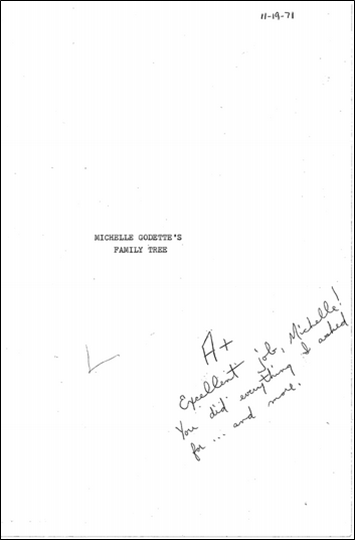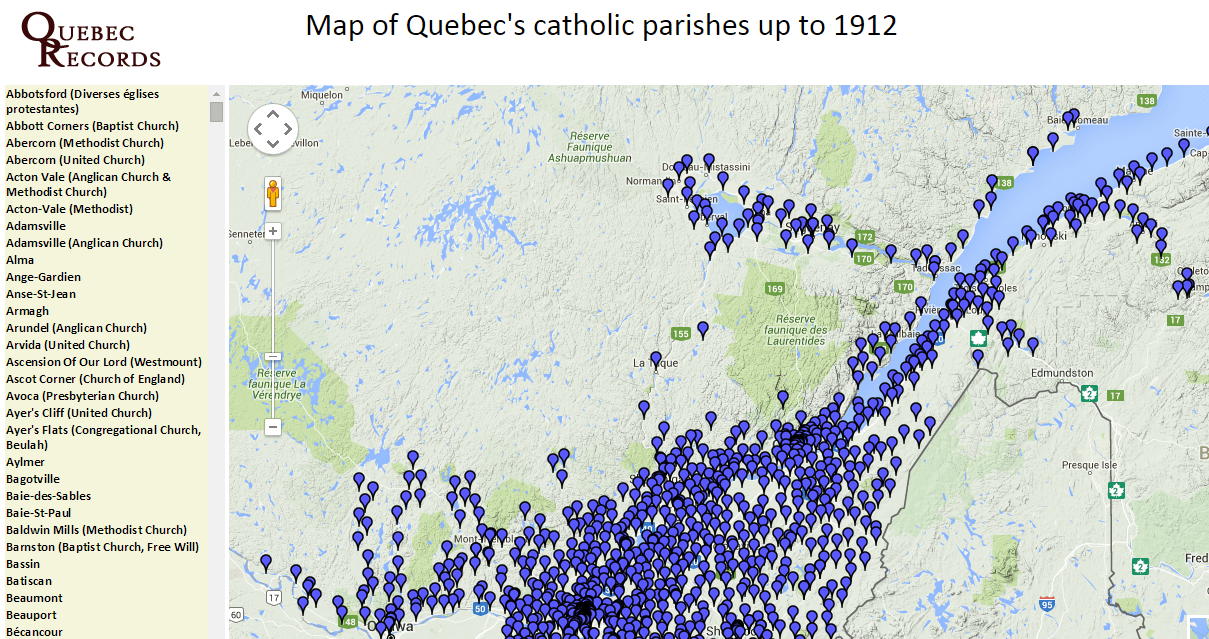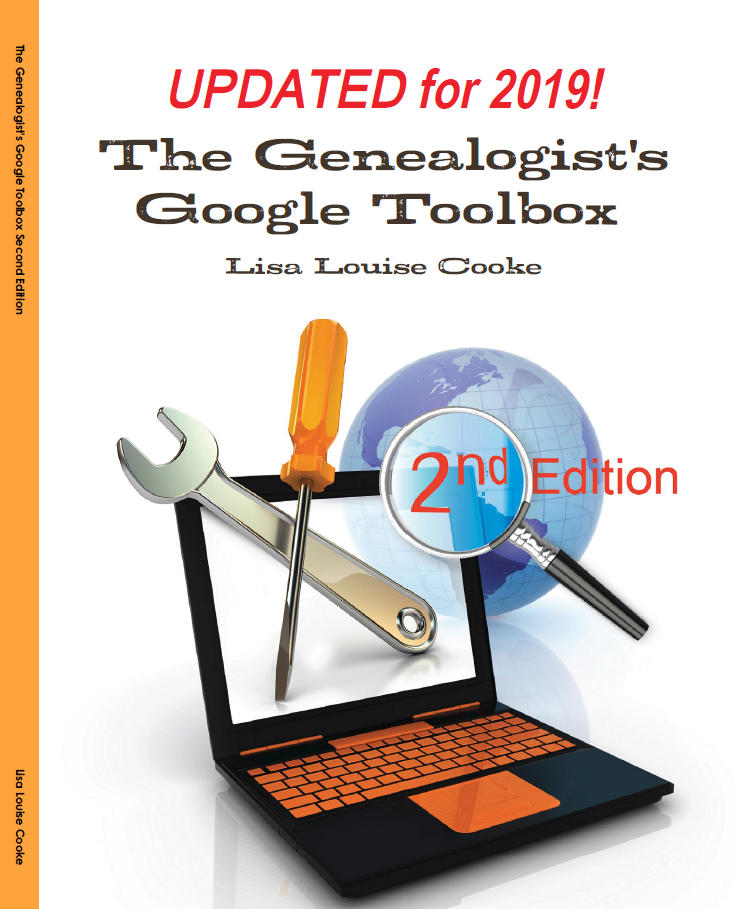Blog

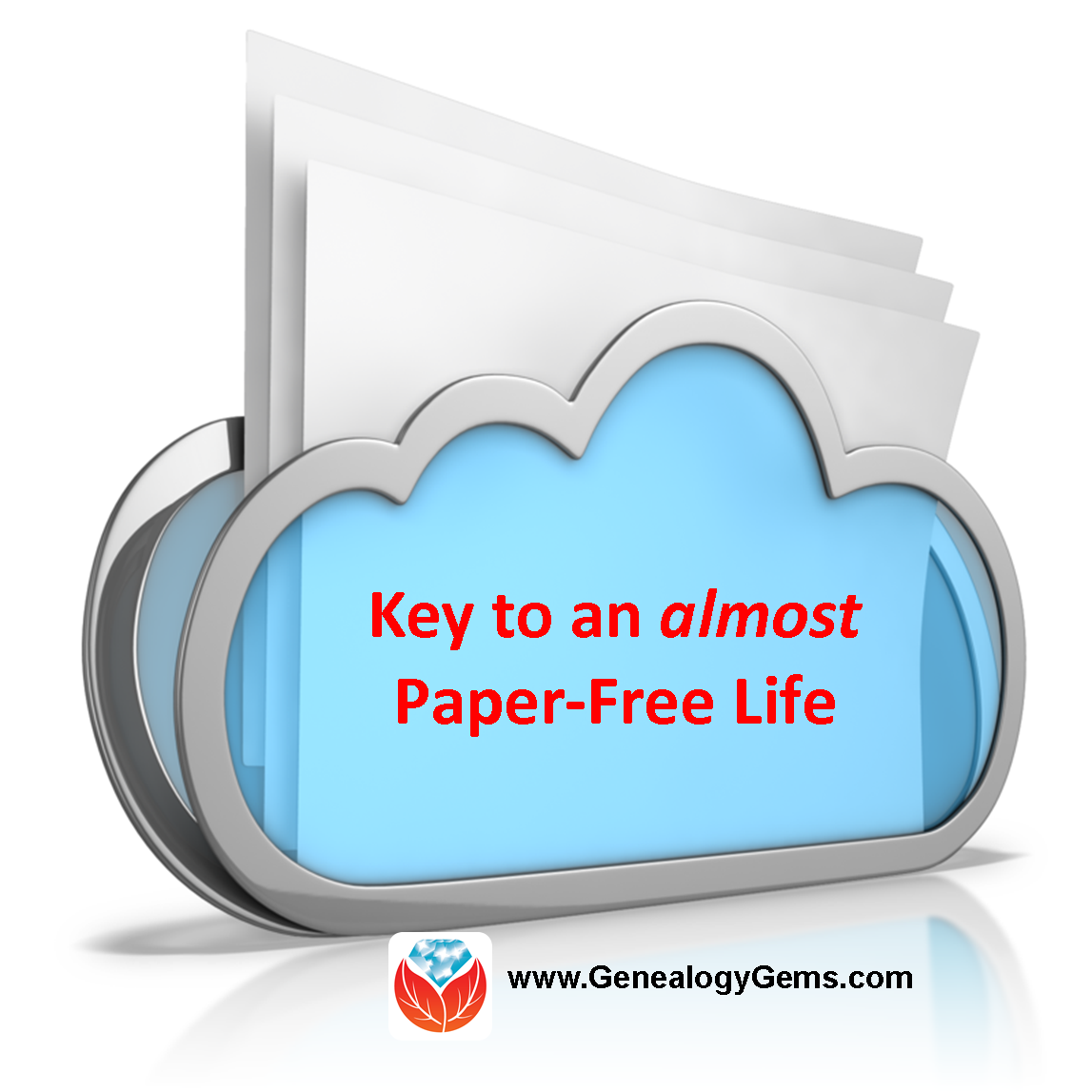
How Cloud Backup Helped One Genealogy Gem Get Closer to Living a Paper-Free Genealogy Life
Every genealogist eventually finds themselves with more paper than they know what to do with. Records, photos, letters, and other ephemera inevitably begin to pile up in the pursuit of our ancestors. So how do you preserve it and protect it for future generations? One Genealogy Gems listener wrote in with the online tool that has her one step closer to living a paper-free life.
Have you dreamed of living a paper-free genealogy life? One where there are no sticky notes surrounding your computer screen and–not so much paper piling up on your desk that your actual remaining work surface is about the size of a sticky note? It happens to the best of us! And much of the reason is we haven’t felt confident about our ability to keep digitized versions of the paper truly safe.
That’s all changing, and a long time Genealogy Gem, Michelle, recently wrote in about her journey to living an almost paper-free genealogy life:

“Dear Lisa,
I wanted to let you know that I just purchased Backblaze to back up my files. I thought you might be interested in my story.
I did my first genealogy project in high school in 1971 and got an A+ on it. I’ve attached the title page for you to enjoy. Well, that project ignited my lifelong passion for family history. During the past 44 years, I’ve amassed a LOT of documents, photos, and videos as you can imagine.
This past year I retired and began the task of scanning all of these items for a couple of reasons:
- I wanted them to be protected.
- I wanted everyone to be able to use them and benefit from my lifetime of research.
I purchased a few external hard drives for storage but couldn’t bring myself to toss much of the physical items at all due to fear of the hard drives failing.
I tried several cloud services but none of them fully met my needs.
Then (on The Genealogy Gems Podcast) I heard your endorsement for Backblaze and tried it out. I knew immediately this was the service for me, especially because you vetted it out and I trust you completely. Now I can finally toss all that unnecessary paper and almost live a paper-free genealogy life!
Thank you for all the wonderful things you do for the genealogy community. You are a hero in my eyes.
A loyal friend and listener,
Michelle”
Thank YOU Michelle for writing in, sharing your story about how you are using cloud backup as part of your paperless strategy, and your kind words. Backblaze is the official cloud backup of Genealogy Gems and we truly appreciate their sponsorship which helps keep The Genealogy Gems Podcast available for free to all genealogists.
And Michelle is very lucky because she even has a record, in the handwriting of her youth, of when she first caught the genealogy bug. This is an original document that she will probably want to keep in paper form. But whether you scan and toss or scan and keep, having your digital files backed up keeps them safe.
Below Michelle shares the rough draft of the foreword to her paper that describes her first encounter with her Grandma on the subject of family history.
“Grandma, how do you remember all this? Do you have it written down somewhere?”
“No,” she replied, “It’s all in my head”
I couldn’t believe how she knew everyone’s extended family – names, dates, places, and a biography of each one. She had a whole family history living in her head.”
And now Michelle does too! Do you?
Your Cloud Backup Questions Answered
Click below to watch my free video class that answers YOUR questions about cloud backup. You’ll learn all about what cloud backup is, how it works, what services are available, and most importantly, how it can save your previous files from being lost or destroyed.
Protect Your Data with the Cloud
If you’re ready to protect your data, there’s no one I trust more than Backblaze.
Get peace of mind knowing your files are backed up securely in the cloud. Backup your Mac or PC just $6/month – that’s about the cost of one latte!
It’s incredibly easy to sign up, and you can even opt for a 15-day trial to make sure Backblaze is right for you. Click here to learn more and sign up now.
Disclosure: This article contains affiliate links and Genealogy Gems will be compensated if you make a purchase after clicking on these links (at no additional cost to you). Thank you for supporting Genealogy Gems!
This article was originally published on July 2, 2015 and updated on April 12, 2019.
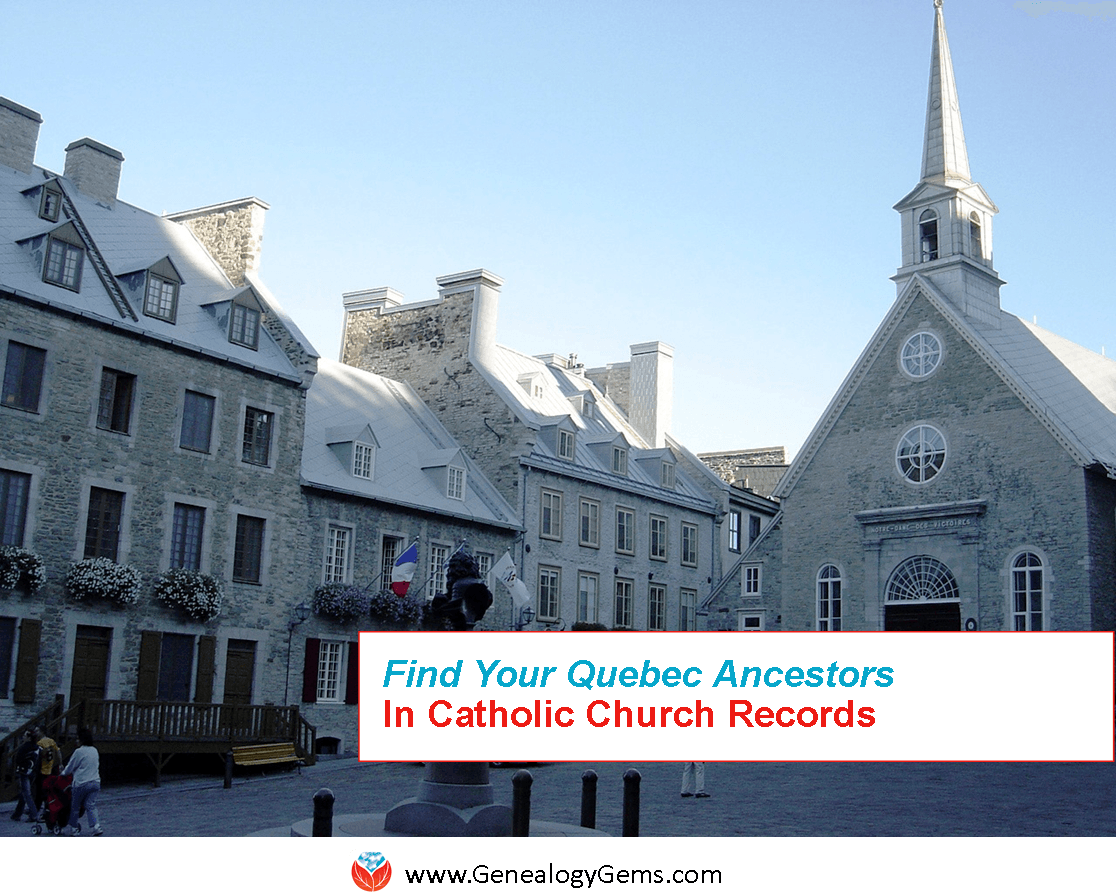
Here’s Why Quebec Church Records are a Great Place to Look for Ancestors
Do you have ancestors who lived in the earlier days of Quebec, Canada? Catholic church records may prove some of your most consistently helpful resources! Read about how to tap into these great resources online, going back as far as the 17th century, to uncover your Canadian family history.
Those tracing their ancestors in Quebec can encounter serious frustrations! The same 50 given names appear for 70% of the people before 1800 (and many share the same surnames, too). Almost all passenger lists are missing before 1865. Several early censuses are not easily searchable online.

Thankfully, in Quebec church records are often available back to the 1600s. There are LOTS of them online, and they often contain the distinguishing details–those exact dates, names, relationships and locations–that can help identify an ancestor with greater certainty.
- Catholic Parish Registers, 1621-1979 on FamilySearch
- Quebec Vital and Church Records, 1621-1968 on Ancestry (subscription required)
- Parish censuses were also taken in various years in Quebec. Click here to learn more about them.
I also recommend exploring this excellent website for Quebec genealogy: Quebec Records: The Genealogical Website of French America
More Canadian Genealogy Gems Right Here at Genealogy Gems
- Canadiana: Digital Archive and Portal to the Past
- Amazing Family History Find in a Basement: Canadian Navy WWI Memories
- Google Earth for Canada and Genealogy
Plus get inspired by this Family History Video about the Cooke family’s immigration to Canada! You can make videos just like this using Animoto. It’s incredibly easy! Click here for step-by-step instructions.
Disclosure: This article contains affiliate links and Genealogy Gems will be compensated if you make a purchase after clicking on these links (at no additional cost to you). Thank you for supporting Genealogy Gems!
This article was originally published on October 6, 2015 and updated on April 8, 2019.
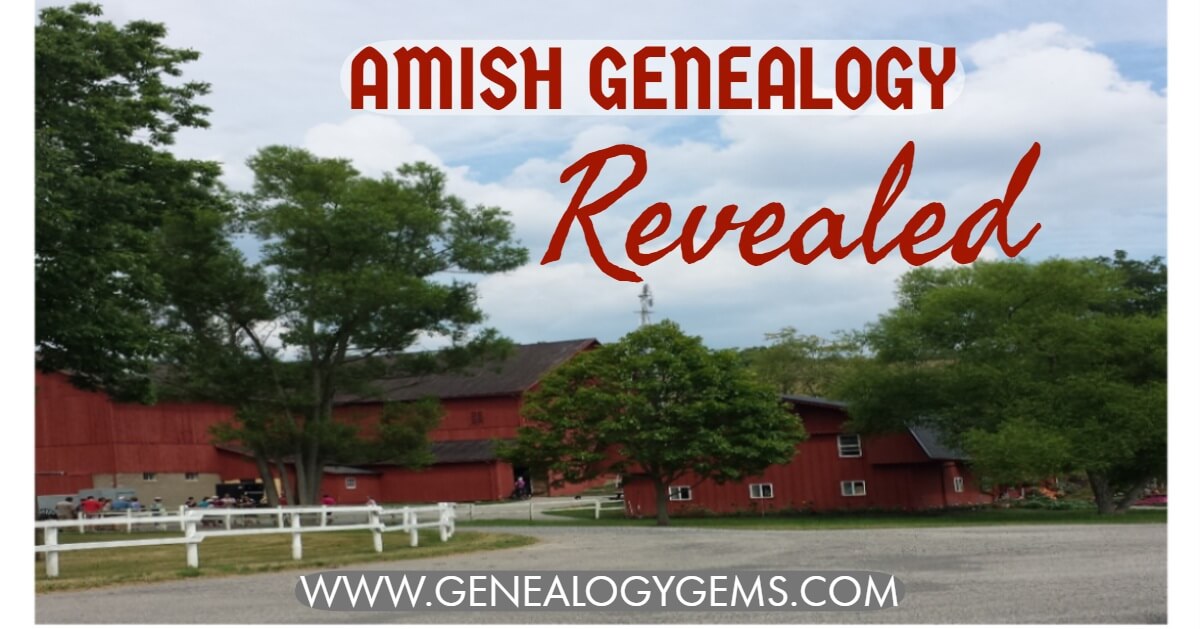
Amish Genealogy Revealed
Amish genealogy is revealed with Facebook! Well, sort of.
I made a recent visit to Amish country and I couldn’t resist talking genealogy with my new friends. I learned a lot about resources for family history and gained invaluable insight that I’m here to share with you. If you have Amish or Mennonite heritage in your family history, you won’t want to miss this amazing information!

The Amish Facebook Equivalent: The Budget
The Budget is the Amish newspaper our guide wittily referred to as “Amish Facebook.” However, this Facebook alternative has been around since 1890! The Budget covers news from all over the United States and Canada pertaining to the Amish and Mennonite communities and families. Who just got married, who had a baby, and who recently passed away…it’s all in there!
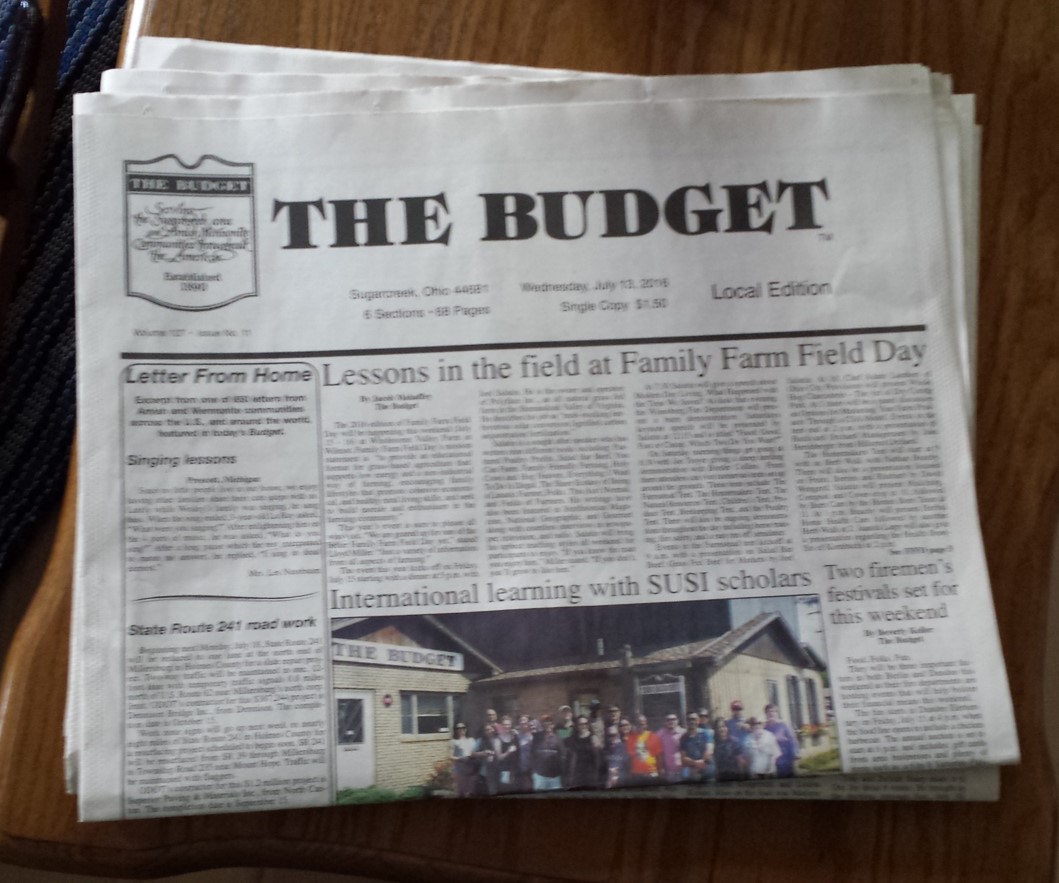 Each weekly edition comes out on Wednesday and the cost is $1.50 per paper. However, you can save by signing up for a 6-month, 1-year, or 2-year subscription. They have local and national editions and you can check out all the subscription prices at their website here.
Each weekly edition comes out on Wednesday and the cost is $1.50 per paper. However, you can save by signing up for a 6-month, 1-year, or 2-year subscription. They have local and national editions and you can check out all the subscription prices at their website here.
Local public libraries in the area may have copies of The Budget in their archives or on microfilm. Be sure to call the library and speak with someone in the history or genealogical department to determine what is available.
You may be thinking, “Wait a minute. I didn’t think the Amish liked having their pictures taken.” But you will actually find many nice pictures in The Budget. I learned not all Amish and Mennonite’s have the same rules about photography. Often, rules about photography, clothing styles, and even the types of dolls a child has are determined by the Bishop and church leadership of that district.
I was delighted to also learn The Budget has its own traditional Facebook page, too, where I could keep up with some of the local news.
The Amish Church Directory
The Amish churches are divided into districts. A district may cover more than one county. They are not necessarily based on county or town borders, but rather encompass about 50 families in a given vicinity.
Most Amish families are listed in a church directory for their area. Not all districts find a directory “important,” said my guide.
My new friend at Yoder’s Amish Farm also shared with me the genealogical value of such a directory. He said the directories came out “most every year” in his district, though not all districts publish yearly. By using the directories for any given district, you could easily piece together a very accurate family genealogy.
The directories are listed by surname of the head-of-household. Each family listing includes their home address, which is particularly helpful to the many local government agencies, my guide mentioned. Each member of the family is listed by first name and birth date.
Marriage dates and death dates, if applicable, are also included. If there has been a second marriage involved due to widowhood, the deceased spouse and the couple’s children are also listed. Maps are also found in the church directory so you can keep track of where all the cousins are living!
Directories can be purchased by anyone and are often found at local dry-goods stores within the communities.
Amish Genealogy Family History Books and Newsletters
You may be interested to know that many family history books or published newsletters exist for Amish family genealogies. You will most likely find these books and newsletters at a local library. Sometimes, they are available to purchase from local dry good stores in the area.
Even better yet, try Google! I Googled Amish Yoder Family History and learned about the Oregon Mennonite Historical and Genealogical Society newsletter. It was packed with great information!
The large bound volumes of Amish genealogy may hold thousands of names and dates. Many begin with a detailed history of who came to America, or who came to a given state or area. Then, it will map out for you the family branches.
Using a few of these wonderful sources may help you trace your genealogy farther than you ever imagined. Happy hunting, friends!
Discover even more ancestors with Google!
To learn more amazing techniques about using Google for your genealogy research, check out Lisa’s The Genealogist’s Google Toolbox, available in the Genealogy Gems store.
The update includes corrected links and resources to replace any outdated or defunct information. You’ll learn more about all the Google tools you need to master to aid you in your family history. Better yet, after you learn how to use these tools for family history research, you’ll find yourself using them to find all kinds of things!
This article was originally posted on August 29, 2016 by Amie Tennant. It was updated on April 5, 2019.

